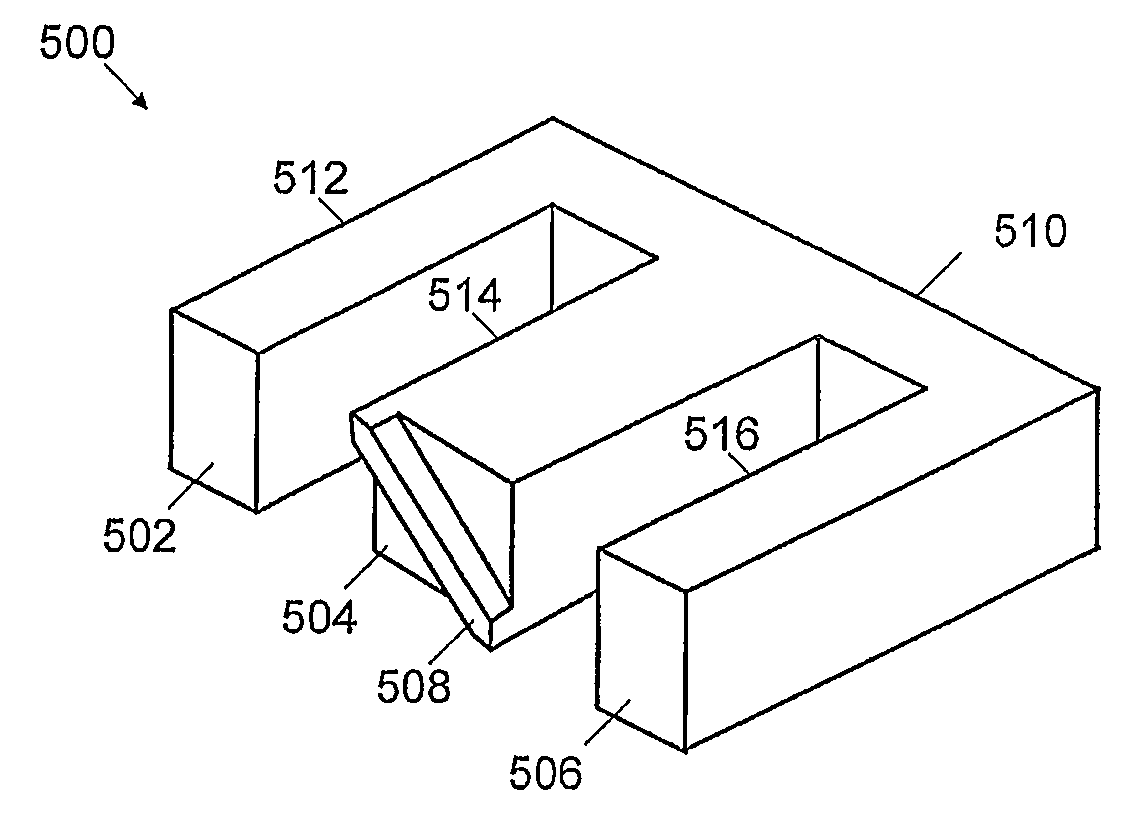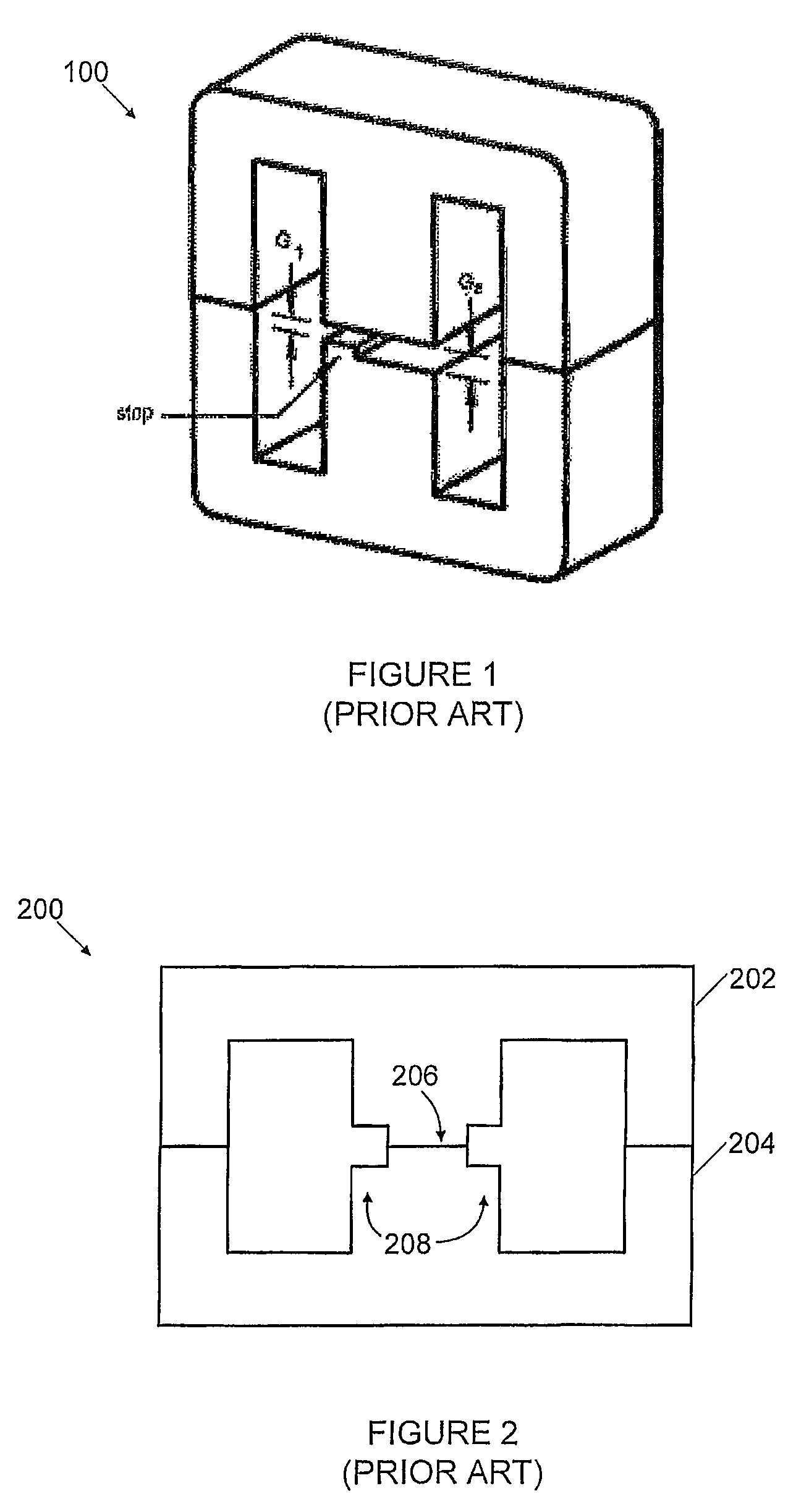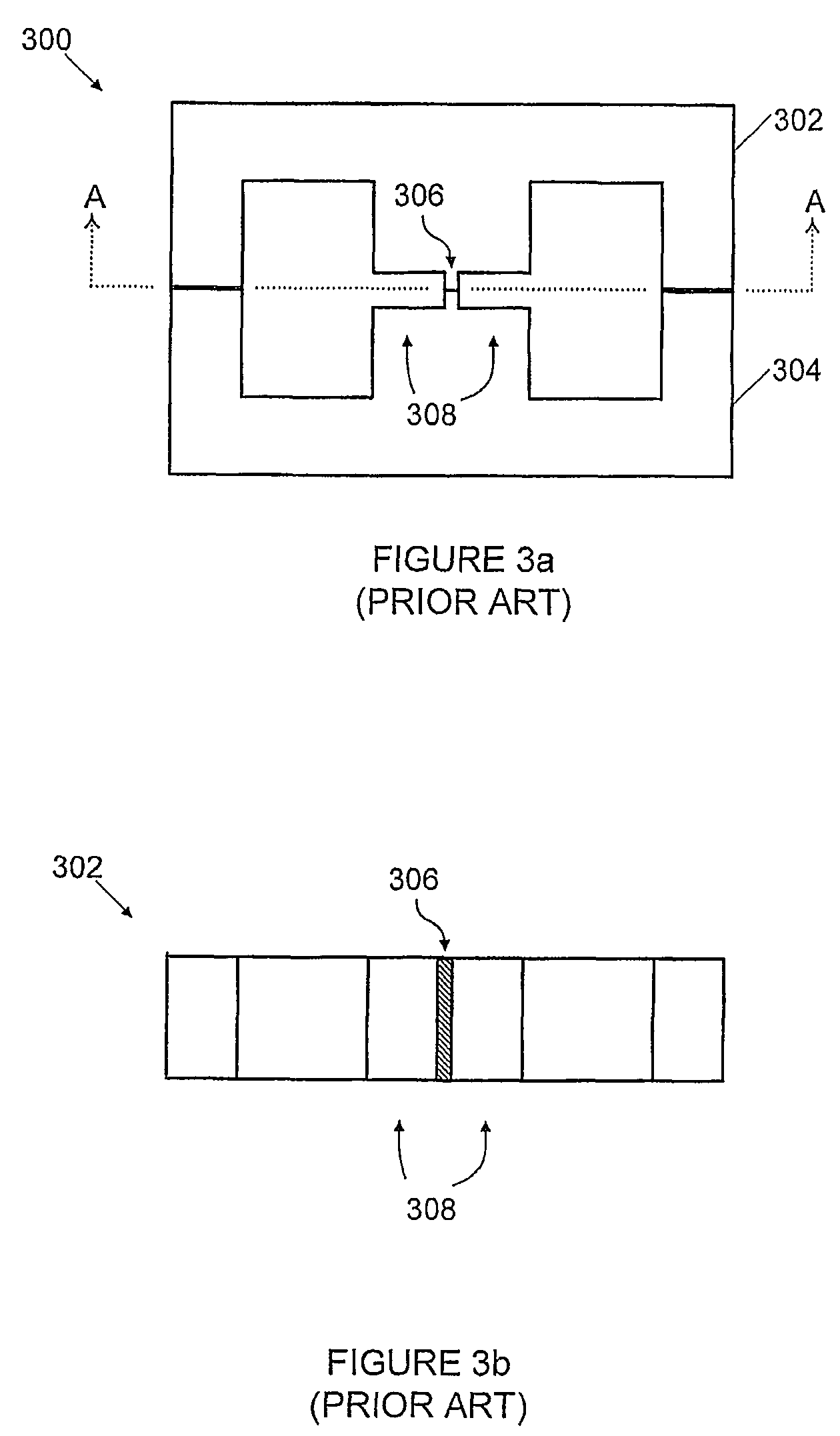Crossed gap ferrite cores
a cross-gap, ferrite core technology, applied in the field of inductors, can solve the problems of reducing the cross-sectional area of the core available for energy storage, increasing the ripple on the output, and large physical inductance overspecified,
- Summary
- Abstract
- Description
- Claims
- Application Information
AI Technical Summary
Benefits of technology
Problems solved by technology
Method used
Image
Examples
Embodiment Construction
[0033]In one specific embodiment of the present invention shown in FIG. 5, an E-shaped core segment 500 has a base 510 from which a plurality (in this case three) of legs 512, 514, 516 extend in a direction perpendicular thereto. The legs are spaced apart to allow a coil (not shown) to be fit over the top of, for example, the central leg. Each of the legs has a respective end surface 502, 504, 506. The central leg 504 has a protruding ridge 508 running diagonally across the rectangular surface from one corner to another. In this particular embodiment, end surfaces 502, 506 are flat and co-planar with the plateau of ridge 508.
[0034]In FIG. 6, the core segment 500 is shown as seen when viewed looking at the end surfaces 502, 504, 506. Like reference numbers are used to denote like parts.
[0035]An advantage of such an arrangement is that the likelihood of incorrectly mixing cores is essentially prevented, since two of the same core segments can be mated in only one possible orientation ...
PUM
| Property | Measurement | Unit |
|---|---|---|
| angle | aaaaa | aaaaa |
| inductance | aaaaa | aaaaa |
| current | aaaaa | aaaaa |
Abstract
Description
Claims
Application Information
 Login to View More
Login to View More - R&D
- Intellectual Property
- Life Sciences
- Materials
- Tech Scout
- Unparalleled Data Quality
- Higher Quality Content
- 60% Fewer Hallucinations
Browse by: Latest US Patents, China's latest patents, Technical Efficacy Thesaurus, Application Domain, Technology Topic, Popular Technical Reports.
© 2025 PatSnap. All rights reserved.Legal|Privacy policy|Modern Slavery Act Transparency Statement|Sitemap|About US| Contact US: help@patsnap.com



